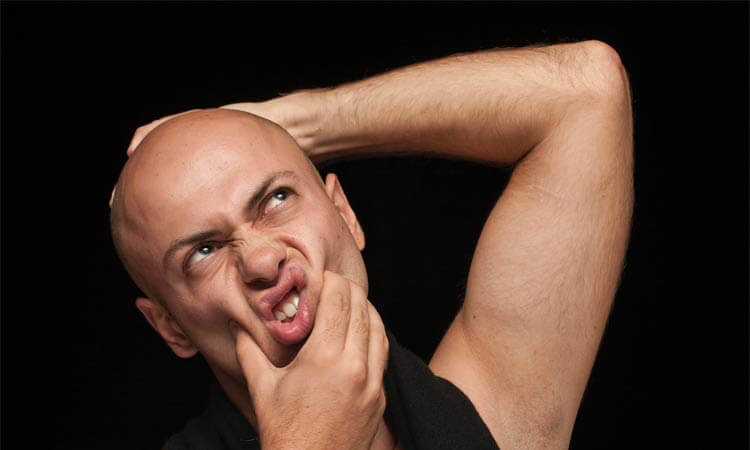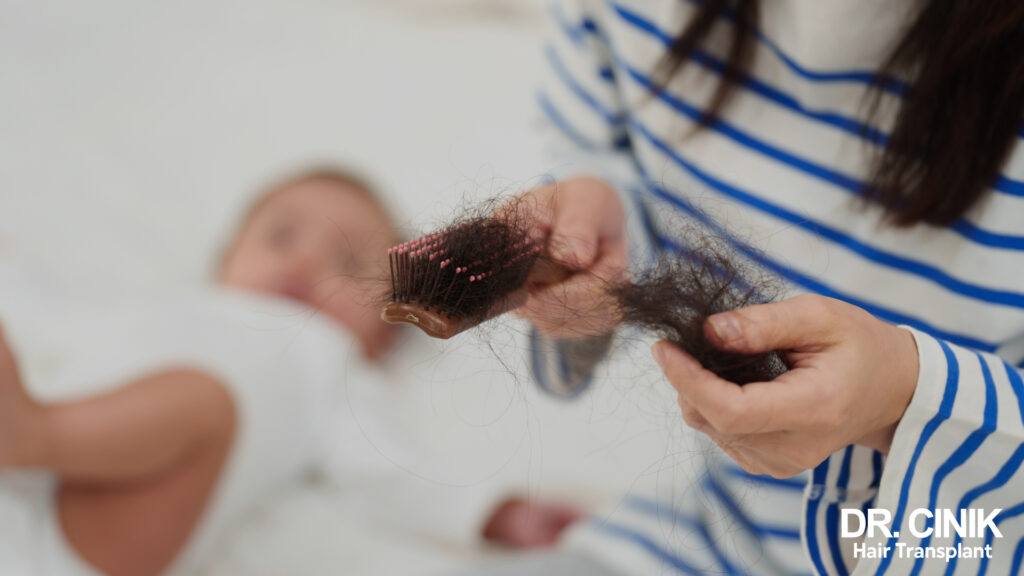How Many Grafts Do I Need For Full Hair Coverage?

Summary
You might have decided to get a hair transplant to restore your natural hair. If so, a big confusion will occur to you when you face the concept of graft numbers needed to be transplanted on your scalp. At Dr. Cinik Hair Transplant, we try to educate all our patients to help them make the best decision about their hair transplant.
The number of grafts needed for a successful hair transplant is an individual situation and needs a consultation session with an experienced surgeon. However, there remain some factors that can affect the number of grafts needed for natural coverage. Both donor and recipient areas need to be studied to determine “how many grafts are needed to cover balding areas?” and “how many grafts can the donor area(s) provide?”.
Hair Transplant: Grafts Are Important
There are many important factors for a hair transplant to be successful. One of the most important elements of hair transplant surgery is having a proper plan to handle the grafts. They are irreplaceable elements of your body and should get extreme levels of attention from the medical team and the hair restoration surgeon. If the medical team doesn’t manage to handle the grafts well, unnatural, doll-shaped, and pluggy hairstyles can appear and in some cases, even a corrective surgery won’t be enough to reverse it.
How Can I Calculate the Number of Grafts I Need for Full Coverage?
If you need to have an approximate estimation of the number of grafts needed to cover the balding area, you need to first have an understanding of what grafts are and what is the ideal density of hair.
What Are Hair Grafts?
Every hair on a human body consists of two parts. The follicle or hair root is responsible for the generation of hair; the second part is the hair shaft or the hair itself. A “graft” is the common name for a hair-bearing piece of skin, containing a single follicle, or group of hair follicles. Grafts are extracted from areas such as the posterior scalp, beard, or body and are implanted into the balding areas, usually at the frontal parts of the scalp and the crown.
A graft might be a single hair root or hundreds. The grafts are necessary for hair transplantation because they allow doctors to restore the natural appearance of your hair. The hairline is formed using single follicle grafts, while the more noticeable regions of hair loss are covered with multiple-follicle transplants.
What Is the Ideal Density for a Hair Transplantation?
When it comes to healthy individuals and individual hair numbers, the average density is between 120 and 140 hairs per square centimeter, and hair grafts are between 60 and 70.
A single hair graft rarely contains just a single hair. As a general rule of thumb, one graft will contain up to four hairs, with two hairs per graft being the most common. So, about 60 to 70 grafts are what we’d call natural hair density. With less than 40 grafts per square centimeter, hair loss becomes apparent.
Since only about 50% of natural hair density is required to provide an impression of fullness, most surgeons will transplant a minimum of 40 grafts in 1cm2.
Which Factors Affect Density of Grafts?
The density of follicles is not the same for everyone. Some variables affect the density of follicles in grafts extracted from one’s donor area which are explained below:
Genetics and Individual Characteristics:
Each person has a unique set of characteristics related to their hair and skin. Their individual pattern of hair growth and scalp size can determine the density of follicles.
Hair Color:
Similar to hair color, hair count is something that is determined before being born. This inherited factor also affects the hair count on the scalp (1). A blonde or brown hair is believed to have the highest count with approximately 140000 hair follicles per scalp on average. The average number is 108000 for black hair and about 90000 hairs for red hair.
Ethnicity:
Several studies support that the density of hair follicles can vary according to one’s ethnic roots (race). Findings indicate a meaningful difference in the follicle density among people with African and Caucasian ancestors.
Age:
As we grow, we lose some of our hair and thus the density of our hair follicles. Our hair follicles’ density in our thirties is half of that when we were just born.
How Many Grafts per Square Centimeter Are Necessary for a Natural Hair Transplant?
The density of hair transplants varies from person to person, hair characteristics of the individual patient, the health of the donor area, donor hair quality, and more. Many factors need to be taken into account. As mentioned above, factors such as hair color, age, genetics, individual characteristics, and race should be considered when determining a hair transplant plan.
That’s precisely why having a consultation with an experienced doctor beforehand is of such great importance. It won’t be possible to perform a transplant with more than 80 hairs per square centimeter in some instances. Hair grafts are taken from a donor area at the back of the head. If the hair is not thick enough at the back of your head, the surgeon wouldn’t be able to extract more than 40 grafts.
Transplanted densities need to be lower than normal in the recipient location in order to avoid complications such as skull necrosis. It’s less probable that too many grafts will survive and give long-term results if too many are transplanted into a limited region.
How Many Grafts Can Give Me a Full Cover?
To be able to calculate the total number of grafts required to give you a natural and enough cover on your baldness area(s), you need to first be familiar with the scales of baldness or Norwood (Norwood-Hamilton) scales. Developed by James Hamilton in the 1950s and later revised and updated by O’Tar Norwood in the 1970s (2). Clinically, the Norwood scale is the most widely utilized assessment when discussing male pattern baldness. It serves as a reference point for determining the extent of baldness, discussing treatment choices, and assessing treatment efficacy (3). The Norwood scale has seven stages. Each stage measures the severity and pattern of hair loss.
Norwood Scale and RequirGraft Numbers
Although the size of the scalp can affect the required number of grafts for full coverage, the relationship between the Norwood scale and the number of required grafts for hair coverage is as follows:
Norwood Scale | Required Grafts | Grafts on the Crown | Coverage Area |
| 1 | 0 | – | N/A |
| 2 | 500 to 800 | – | – |
| 2a | 1400 to 2100 | – | Centre |
| 3 | 1700 to 2400 | – | Front and Temples |
| 3 vertex | 1800 to 2700 | 2000 to 3000 | Front and Crown |
| 3a | 2000 to 3000 | – | Front and Crown |
| 4 | 2100 to 3500 | 3400 to 3800 | Front and Crown |
| 4a | 2500 to 3600 | – | Front |
| 5 | 2500 to 3800 | 3800 to 4500 | Front and Crown |
| 5a | 2800 to 4300 | 4700 to 5500 | Front and Crown |
| 6 | 3000 to 4800 | 5000 to 6500 | Front and Crown |
| 7 | 3300 to 5000 | 4800 to 6300 | Front and Crown |
How Many Grafts Can Be Extracted from the Donor Area?
Unlike what you might have heard in some marketing content, the donor area is not an endless forest of hair follicles. Besides, it is not really always necessary to harvest extremely from the donor area even if it can provide such numbers of grafts. An experienced surgeon should determine the number of sessions needed and the number of grafts needed to cover the baldness area and analyze the situation of the donor area.
Overharvesting and excessive implantation of hair grafts can end in unpleasant results of a hair transplant and put you at high risk. It is possible to harvest up to 8000 grafts from the donor area. However as mentioned above, it is not usually necessary to harvest such a great number of grafts as they won’t be needed in the implantation phase.
Hair Transplant Procedure at Dr. Cinik Hair Transplant
You might be curious about the process of hair transplants at one of the best hair transplant clinics in the world and need to know how the number of grafts required for a hair transplant is calculated.
Dr. Emrah Cinik designs your hairline based on your old photos and scalp shape, which creates a natural look. He determines the number of grafts required for your hair transplant and analyzes the strength and density of hair on your donor area. This can be used to determine the number of sessions and the possibility of harvesting from your donor areas. If the posterior parts of your scalp cannot provide the necessary number of grafts, beard and body (chest for instance) hair can be used as the additional donor areas to support the required number of grafts.
Thousands of successful hair transplant surgeries can be an indicator of optimal harvesting and high-quality work at Dr. Cinik Hair Transplant.




